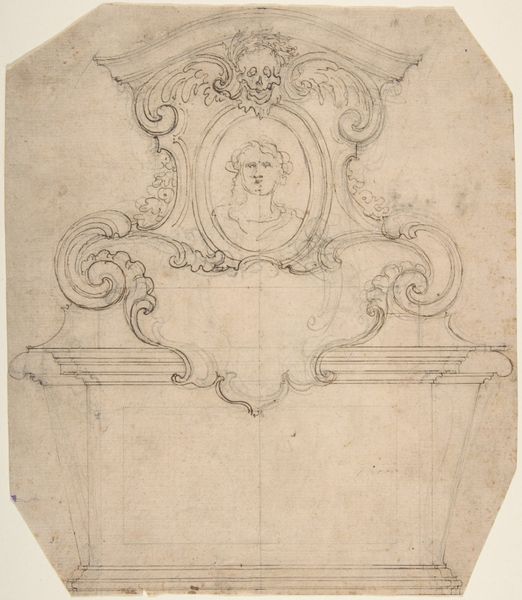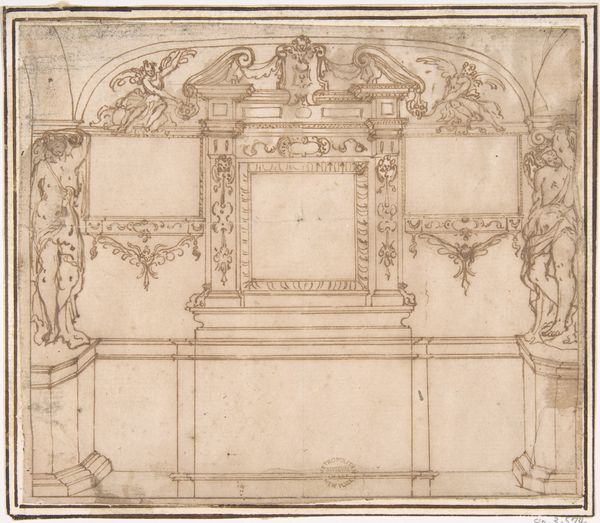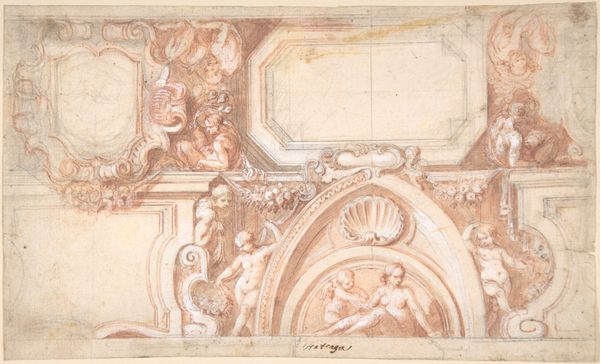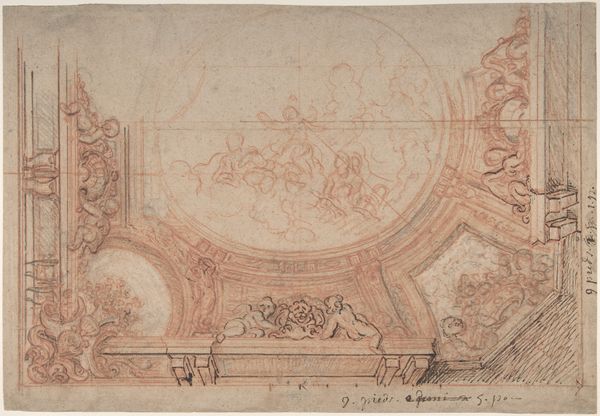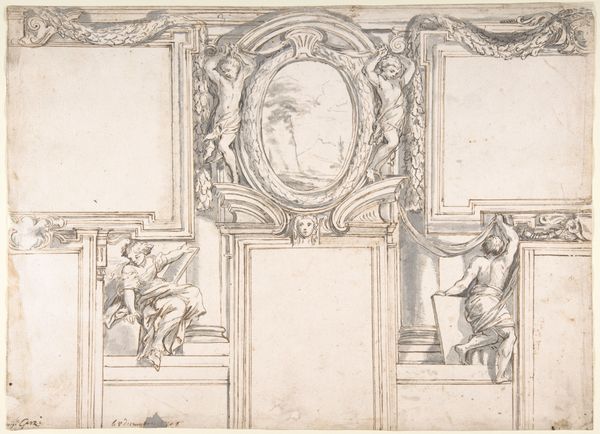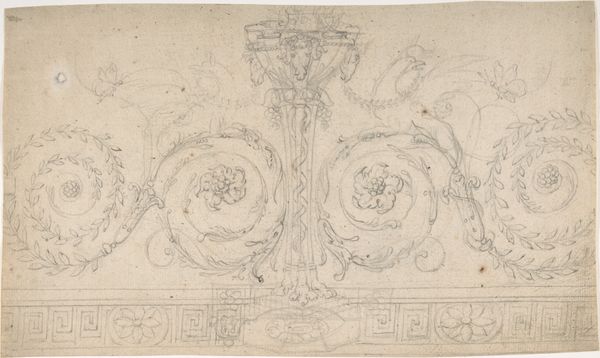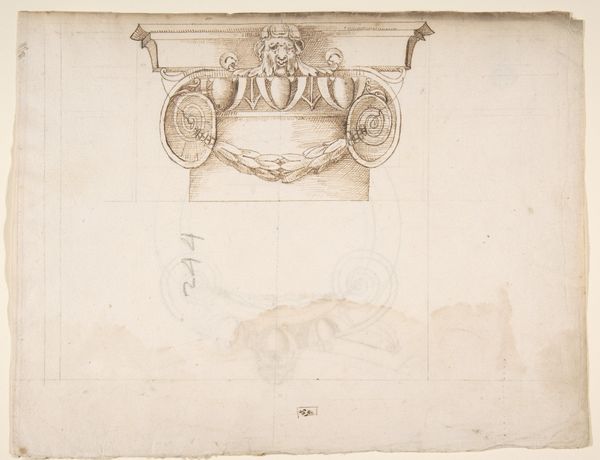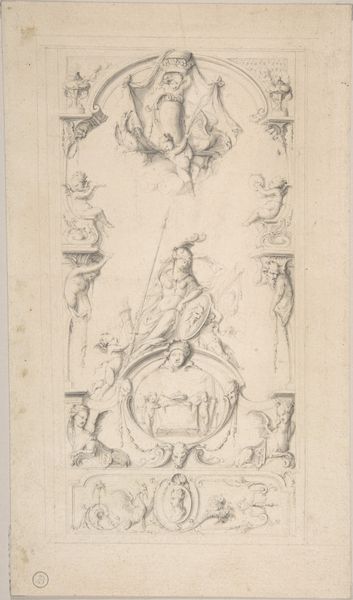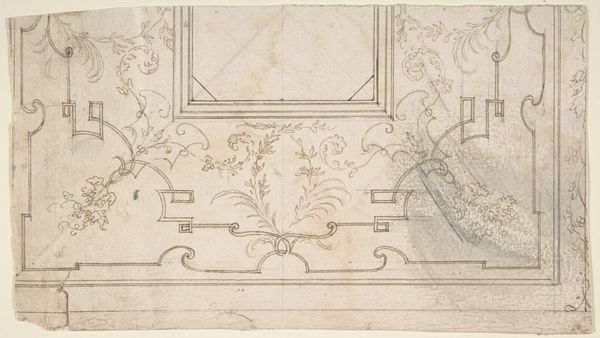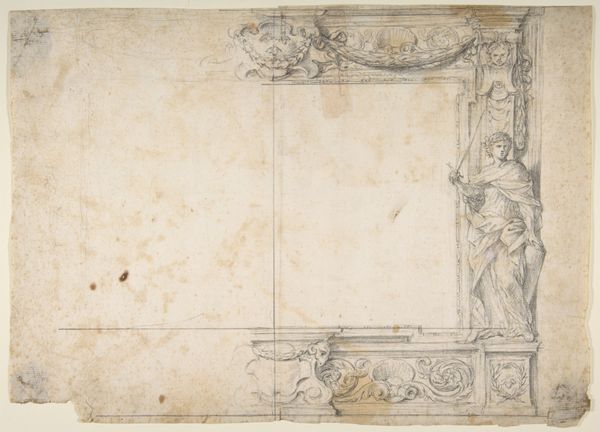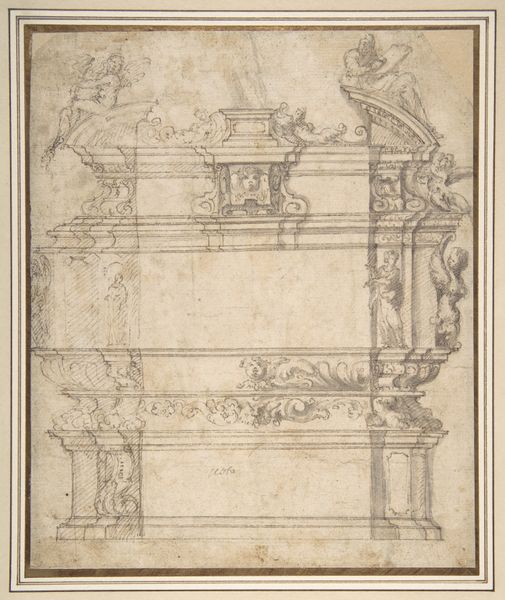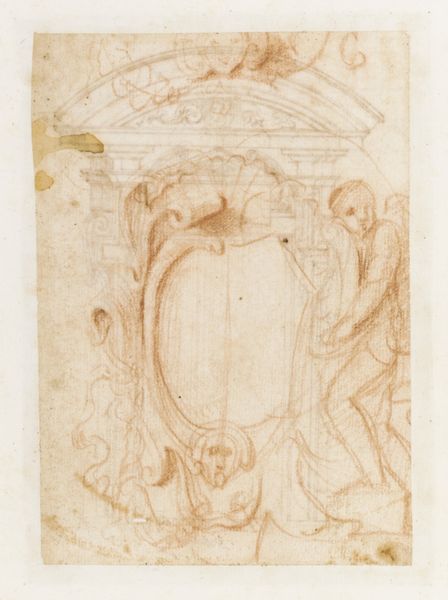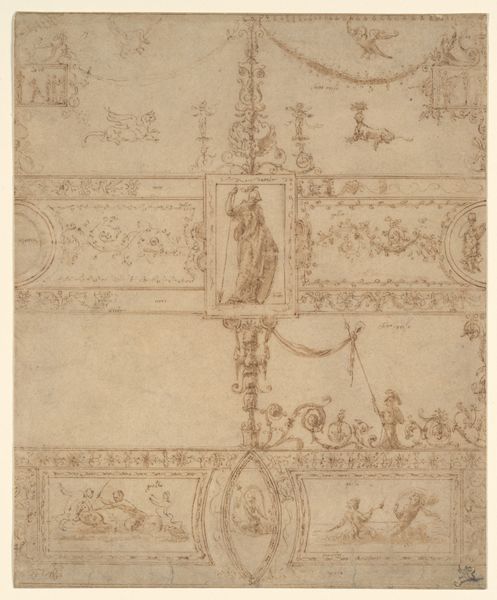
Design for a Lunette Decoration: Coat of Arms Flanked by Seated Allegorical Figures (recto and verso) 1553 - 1626
0:00
0:00
drawing, print, paper, pencil, charcoal
#
portrait
#
drawing
#
allegory
# print
#
charcoal drawing
#
mannerism
#
figuration
#
paper
#
form
#
pencil
#
line
#
charcoal
#
history-painting
#
charcoal
#
italian-renaissance
Dimensions: 6 15/16 x 10 3/4in. (17.7 x 27.3cm)
Copyright: Public Domain
Curator: Looking at this work, the figures almost float against that meticulously drawn grid. It's strange but calming, isn’t it? Editor: Indeed. We’re viewing "Design for a Lunette Decoration: Coat of Arms Flanked by Seated Allegorical Figures," a drawing by Cristoforo Roncalli, also known as Pomarancio, created sometime between 1553 and 1626. It offers us an intriguing look into the visual language of power during the late Renaissance. Curator: Right. That grid. I wonder, was that for the artist's reference when blowing it up to wall-size? Seems like something the Renaissance Instagram influencer might use to ensure perfection, haha! Editor: Precisely. Artists during this period, especially those working on large-scale decorations, would use such grids to transfer designs accurately. But the design itself—the coat of arms flanked by these classical allegorical figures—speaks to the commissioning patron’s desire to align themselves with the virtues and prestige of antiquity. It's image management, Renaissance style! Curator: And look at the allegories themselves! They feel so nonchalant, lounging around with an air of… inevitability. Almost like they're whispering, "Yeah, you know you *need* a strong emblem flanked by ideals. Don’t you?" I guess what hits me is the subtlety. I wouldn't know if I found these intimidating or inviting, ha. Editor: It's that ambiguity that makes it so compelling! We often see coats of arms as purely symbolic of power, but the figures here are almost domesticating it, placing it within a humanistic context. Their ease and grace reflect the patron’s cultivated persona and their desire for enlightened rule. It's a claim to power rooted in sophistication rather than brute force. Curator: That makes perfect sense. In a weird way, the grid itself almost *softens* that blow. As if we’re watching the divine brought to Earth, quite literally, with some precision planning to make it accessible. Editor: Yes, exactly. I see now that Roncalli makes a subtle claim that transcends time: the visual staging of power and the narratives around cultural leadership continue to echo through ages of statecraft and political art. Curator: Right you are! Well, this has been more fun than I thought, parsing a blueprint like that! Editor: Indeed, it's not just an architectural plan; it's a diagram of aspiration!
Comments
No comments
Be the first to comment and join the conversation on the ultimate creative platform.
